- Home
- David Hewson
Carnival for the Dead Page 22
Carnival for the Dead Read online
Page 22
‘Some!’ he burst out. ‘But not that about me and . . .’ His eyes found Camilla’s for a moment. ‘Not about us two like that. We’re just friends. Nothing more. Good friends. It’s disgusting to think someone could even imagine a thing like that. Whatever it’s meant to be . . .’
Strozzi glanced at Teresa and she knew immediately what this older, wiser man was trying to say: that there was more than affection here, even if it was on one side alone.
‘Making fun of Camilla’s sickness like that,’ Jason went on. ‘What sort of person thinks it’s a laugh being ill?’
‘Whoever it is seemed . . . I don’t think they found it funny,’ Camilla said. ‘It was a sad story. With a little hope in it. And love and sacrifice and goodness, I think. They were trying to make a point.’
She gazed at Teresa and asked, ‘But what?’
‘I imagine that’s for me to work out. This story has a conclusion, but it’s part of something longer that isn’t finished. Something to do with this man Arnaud, the Count of Saint-Germain.’
All three of them looked clueless, as did Signora Rizzolo, the proprietress, who stood blatantly listening from the door. Strozzi stared at her until the woman coughed, muttered something about customers, then went back into the café.
‘I don’t wish to pry,’ Teresa said carefully. ‘But it would be useful to know how much exactly is true, or close to it.’
Some details she’d guessed already. The medical details, before ranging into fantasy, matched the treatment for a range of blood diseases. Camilla quickly confirmed, in a very matter-of-fact fashion, that she was suffering from a rare form of leukaemia. The treatment included transfusions of blood stem cells from someone with a matching tissue type. In Croatia the only amenable donor she could find had vanished. Desperate for help, Camilla had used a friend in Venice to gain treatment within the Italian state medical system, which had better and newer techniques. By accident she’d met Jason in this same café the year before. Keen to help he’d offered to be tested for compatibility. The doctors said they were a perfect match. Now, his blood kept the illness at bay during more long-term treatment for the condition.
‘It doesn’t harm me,’ the young Englishman said. ‘What that story was making out . . . that Camilla gave me some kind of sickness in return . . . that’s a load of tripe.’
‘Of course it is,’ Teresa told him. ‘I’m a doctor. I know. Medically the whole thing is . . . a load of tripe. The idea . . .’
Mystery not explanation. The words she’d heard in the dark before the Plague Doctor and his dog fled back towards the Rialto returned to her.
‘It’s not to be taken literally.’
‘The treatment’s working too,’ Jason added, and took Camilla’s hand. ‘She’s a lot better than she was last year.’
‘I am,’ she agreed, and slowly, with affection, unwound her fingers from his.
Teresa’s heart went out to them both. The truth was there in their faces, and in Strozzi’s sad, downcast eyes. Jason loved this beautiful young woman. She, in return, was grateful and fond of him. Nothing more.
I love you. You love me. How can this possibly change?
It won’t, Teresa thought. It can’t. The heart’s a wilful, selfish instrument, deaf to reason, intent on following its own desires, nothing else. Was this a lesson she was supposed to learn too? A harsh truth that was part of the solution she was seeking?
‘Does this man . . . whoever wrote this know you, Jason?’ she asked.
‘Not very well,’ he insisted. He told how he arrived in Venice. The facts were similar to those outlined in the story, though he had been in the city for nearly a year and found the job with Signora Rizzolo almost immediately, simply by knocking on her door and offering, at the outset, to work for free. There were, however, significant differences. He’d never been close to destitute, and his father was still alive and – Jason added proudly – a small businessman who had once been the deputy mayor of Wakefield.
‘Your mother?’ Teresa asked. This aspect of the story seemed important.
‘Mum’s a member of the Townswomen’s Guild,’ Jason said straight away. ‘Don’t have an uncle or aunt at all. Wicked or otherwise. My folk are lovely. Mum and Dad came to visit here only last October. That stuff’s all . . .’
‘Tripe,’ she said quickly. Teresa looked at Camilla. ‘And your doctor?’
‘A consultant at the hospital,’ she said at once. ‘The big one near Zanipolo. Not called Marco either.’
As for some strange miniature palace stranded on the water . . . Camilla was lost for any clue to its identity. She knew of no such place, she insisted. Nor did Strozzi or Jason.
‘Yet whoever wrote this,’ Teresa pointed out, ‘must have met you both. Or talked to someone who has. Someone who’s aware of your medical condition. Of Jason and where he came from.’
The Englishman cast a quick look at the door.
‘Doesn’t really narrow it down,’ he said. ‘Bella – Signora Rizzolo – is a lovely old girl but she’s a one-woman loudspeaker system for the whole of Dorsoduro. Plenty of customers know I give blood for Camilla, Sofia for one and, without telling tales, she isn’t exactly discreet either.’
Tenses, Teresa thought, watching, listening intently.
Jason paused then added, ‘And this bloke of yours is called the Plague Doctor. Maybe that’s a clue too. Maybe that’s what he really is. A doctor. Have you thought of that?’
No, she hadn’t, and his words made her all the more convinced the story had underestimated Jason Cunningham greatly. He was, it seemed to her, very quick off the mark indeed.
Filippo Strozzi cleared his throat and said, ‘Unless I’m mistaken, the author of these stories – I am assuming there is just the one, by the way – knows much more than this. He – or she – was aware that you would come to look for Sofia, for one thing, and was able to deliver an envelope to the house, with your name on it, before you turned up.’ His arm swept the room. ‘How could some customer here know that?’
‘Whoever it was knew that Sofia went to the Scuola di San Giorgio degli Schiavoni,’ Teresa pointed out. ‘And something about the Englishman, Jerome Aitchison . . .’
‘You mean that nutter who took a pot shot at the lady in the piazza?’ Jason Cunningham asked. ‘He’s involved in this?’
‘He was,’ Teresa said. ‘Or at least so the story claimed.’
‘Police,’ he said emphatically. ‘This is a job for them.’
‘The police aren’t interested,’ Camilla told him. ‘The Englishman’s dead. Sofia’s vanished.’
Strozzi nodded, thought for a moment, then said, ‘If those stories were coming to me I would feel the possibilities are very limited. The person who’s writing these things must surely be someone who knows Sofia very well. Or, more likely I think, she is writing them. To help you find her.’
‘Why doesn’t she just call me?’ Teresa asked. ‘Why is this all so hard?’
Strozzi leaned back in his wheelchair and sighed. Then something, some spark of recognition, struck him.
‘Carpaccio,’ he said. ‘You reminded me. The dress. The gown in Sofia’s room. The one you found on the tailor’s dummy.’
Camilla’s eyes lit up at that moment.
‘Of course! I was thinking carnival all the time. What a fool. It’s her, isn’t it?’
‘Who?’ Teresa asked.
‘Ursula. The beautiful saint. Who else? She’s just round the corner. You must see!’
‘And you must work,’ Strozzi said. ‘Masks, Camilla. Masks. I’m playing later. Jazz for a boat party. I will take Teresa to the Accademia. Jason? Would you care to join us?’
‘Paintings?’ the young Englishman asked, screwing up his nose. ‘Not my thing, thank you. I’ve got loaves to bake.’
The electric motor of the wheelchair whirred. Filippo Strozzi, an active man in spite of his disability, was the first out of the door, strapping on both scarlet scarf and black beret as he went.
The great
gallery by the Grand Canal was wrapped in sheets and vast, ugly posters for a new movie. Refurbishment. She tried to remember what it looked like underneath its present shroud. One more Venetian church or scuola converted to another purpose. Now it stood like some hastily covered stone corpse abandoned next to the handsome low curve of the wooden bridge sweeping across the Grand Canal. A scattering of tourists shivered outside in the light snow as they queued for tickets at a temporary booth.
Strozzi was having none of this. He buzzed up and down the front of the gallery as if trying to remember something. Then Teresa saw the sign for the disabled entrance, pointed it out and they went up a low metal ramp by the side and dealt with a polite woman in an office there.
‘So many things change,’ Strozzi complained as she stared at his resident’s card. ‘One minute you come in one way, the next somewhere else.’
‘Works,’ the woman said grumpily, then, when he seemed completely lost for directions, pointed them to a small lift with a cracked and peeling disabled sign stuck to the door.
It was still a little chilly inside the Accademia. Strozzi merely removed the scarf but left the beret in place, whirring around the corridors, muttering to himself. In the end they had to ask an attendant, and found themselves guided to Room XX half-hidden down a narrow corridor.
Teresa walked in and found herself for a moment quite lost for breath. The chamber was filled with large, spectacular canvases, all clearly the creation of the same artist she’d seen working on a much smaller scale in the little scuola in Castello. Here the artist’s imagination ran riot and the result was so panoramic, so vivid and full of narrative power, it was like encountering a three-dimensional movie that had leapt, brimming with life and colour and violence, straight out of the final few years of the fifteenth century.
‘Here’s the one,’ Strozzi said, heading straight for what had to be the last canvas of several, on the right.
‘No. This is a story,’ she said, picking up the card that described the collection. ‘Bear with me. I want to start at the beginning.’
Stories are important, she thought. More than she had once appreciated.
There were nine canvases in all, telling a fable that came, like St George, from The Golden Legend. In this case it was the tragedy of a mythical princess, Ursula, the daughter of a king of Brittany, who was betrothed to a pagan prince in return for his conversion to Christianity. The works – bold, sweeping images of a medieval Europe that seemed so real one might step up from the gallery floor and enter them – filled the walls with ships and castles, noblemen and soldiers. They ran in sequence beginning with the ambassadors organizing the political arrangements for the wedding in cities much like parts of Venice still.
There was a brief, polite and formal meeting between Ursula and the prince, taking place on a stretch of water that might have been a reimagined Grand Canal. Then came a strange and disturbing image. Ursula asleep in bed, alone, stiff, almost corpse-like, with an angel standing by the door delivering a message that could be just one thing: a warning of her forthcoming martyrdom.
Teresa Lupo stood in front of this painting feeling cold and a little distanced from reality, unable to force from her head a picture of Sofia in the same situation, beneath the crumpled sheets in the tumbledown apartment a few hundred metres away, a solitary figure, unaware of what lay ahead.
In the next canvas Ursula and the prince were meeting the Pope in Rome, outside the recognizable barrel-like shape of the Castel Sant’Angelo.
And then to the final vast panorama, divided into two sections like a modern split-screen piece of cinema.
On the left the pilgrims were in the midst of a battle outside Cologne, attacked on all sides by fierce and gaudily armoured Huns. There was bloodshed everywhere. Men and women lay on the ground, in agony, hacked by swords, pierced by knives, shot with arrows. The Pope from the previous frame was pinioned to a tree by a soldier’s dagger, stabbed through the neck, in the throes of an agonizing death. It was a dreadful, despairing scene.
Yet in the foreground, kneeling on the earth, praying calmly, awaiting her fate, was the figure of Ursula. The similarity to the figure on the tailor’s dummy in Sofia’s apartment was so close it sent a sudden shiver through Teresa Lupo. The mythical saint cut a humble yet courageous figure as she waited on the ground, her long blonde hair falling down her back onto the crimson cloak that covered the sky-blue dress with a gold braid collar and shawl. In front of her an extraordinary archer, face hidden, tumbling curls of yellow hair falling past his shoulders, drew back a bow, aiming the arrow directly at her heart.
His pose – tense, determined, muscular – seemed the epitome of male power and cruelty. On his head stood a circular red feathered hat, almost a carnival prop in its own right. Strapped to his right leg was an ornate quiver decorated with strange pagan emblems. The arrow was in place, the string fully stretched. His entire posture, from the sinewy legs to the athletic arch of his shoulders, mimicked the strains and pressures of the bow itself, as if he were as much a deadly weapon as it. Around this faceless yet beautiful man other soldiers gathered to watch, waiting for the heartless slaughter of the young woman praying on the ground, hands tight together, eyes fearlessly set on her executioner. Death was a moment away yet she could not have been more serene, more composed.
The dress, the collar, the shawl, the crown . . . all the things that had fallen to the floor when Teresa had forced open the door were here. Sofia’s apartment possessed an exact copy for some reason and Teresa could not imagine for one moment what that might be. The only possibilities seemed trivial, mundane. Some historical pageant perhaps, associated with the carnival but not trapped in its rigid, formal adherence to tradition? A theatrical event?
These, she knew, were not the answer. Nor could she remember much of Sofia’s embroidery skills. Could she really have made such a detailed and beautiful copy?
‘I’ve only seen the photo on my camera,’ Strozzi said. ‘But . . .’
‘It’s the same,’ Teresa told him.
She walked back round the room, examining each canvas again very carefully. The wheelchair whirred behind her.
‘What are you looking for?’ Strozzi asked after a while.
‘This,’ she said, pointing to the small notice painted at the foot of the nearest canvas.
‘What is it?’
‘It’s called a cartellino. The painter used it to show it was his work. A signature, if you like, but one that becomes a part of the canvas itself.’
Strozzi, who seemed to know only a little of painting, asked, ‘Is that significant?’
‘Every picture here has the simplest, most obvious of cartellini. Carpaccio’s name, suitably disguised in Latin. And the date of the painting.’
He waited.
‘There’s another canvas in this story. In a scuola in Castello. It seems to be important somehow. The cartellino is very different. It uses an unexpected verb tense. That one says, “Carpaccio was painting me.”’
‘Was painting me when what?’ Strozzi asked straight away.
‘Precisely.’
Teresa turned three hundred and sixty degrees, taking in each panel, following the movement of the story and the same characters towards their dreadful end. The right-hand half of the last canvas, divided from Ursula’s death by a column, depicted the slow, formal ceremony of her interment. There was a complete narrative of an adult, Christian life here, one recreated with the utmost care and dedication. Teresa felt she could sit in this room for hours, knowing that if she waited long enough the faces on the walls would find their voices and begin to speak.
‘I haven’t helped at all, have I?’ Strozzi said miserably, playing with the controls on his wheelchair, flicking a lever from side to side like a fidgety child.
‘Of course you have,’ Teresa told him.
‘You’re very generous.’
‘No, Filippo. I’m not. Not at all.’ Answers came from synthesizing fact and fiction, ignorance and knowled
ge. Guesswork, in other words. ‘Usually I’m the most logical and prosaic and . . .’
What was the phrase Arnaud, the Count of Saint-Germain, had used about the kind of scientist he detested?
That they were embarked upon a relentless march towards certainty, a Darwinian destruction of the glorious wonder of doubt.
‘Inflexible of people,’ she concluded.
Ursula’s beautiful face, composed and ready for sacrifice, would stay with her for a long time, she thought.
There was something here she was supposed to notice too. She thought back to that lost, first story, the tale of Carpaccio’s Dog, that had first set her on this path.
This lovely invented saint from a mythical Brittany was not the first Ursula she’d encountered in Venice.
Her phone rang the moment Teresa Lupo got back to the apartment.
‘You said you’d call,’ her mother complained immediately.
‘If I had anything to tell you. I’m sorry. I haven’t.’
‘That’s something, isn’t it?’
Teresa sighed. Her mother was right.
She sat down at the table, talking as she navigated the computer.
‘Yes it is. I’ve been distracted.’
Quickly, in a matter-of-fact fashion, she recited again the routine actions the police were taking. The missing person register. Photos and briefings for hospitals and other government agencies. She left out any mention of the Plague Doctor or a gondola at two in the morning. There seemed no point. It would only kick off an old and now well-exercised argument.
‘I know that!’ Chiara complained when her daughter had finished. ‘Are we just supposed to wait until they find something?’
‘That’s certainly their idea.’
‘Perhaps they know best. Aren’t you coming back to Rome? Your office won’t be happy. That idiot deputy of yours called here last night, babbling like a child. I didn’t understand a word he was saying. Why would he want to talk to me?’
Silvio, she thought. He wouldn’t give up.
‘I don’t know,’ Teresa told her. ‘I’ll make sure it doesn’t happen again.’

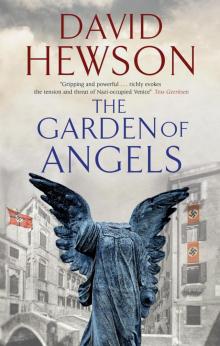 The Garden of Angels
The Garden of Angels Solstice
Solstice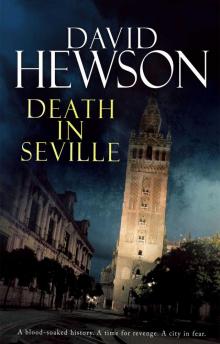 Death in Seville
Death in Seville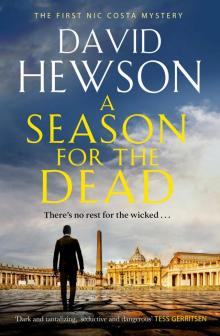 A Season for the Dead
A Season for the Dead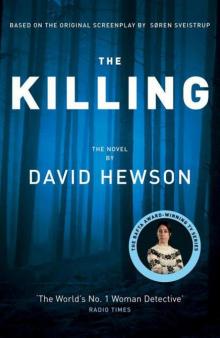 The Killing tk-1
The Killing tk-1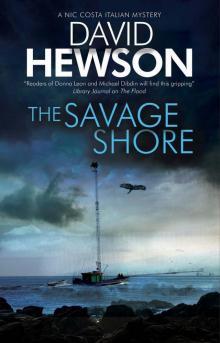 The Savage Shore
The Savage Shore Dante's Numbers
Dante's Numbers Sacred Cut
Sacred Cut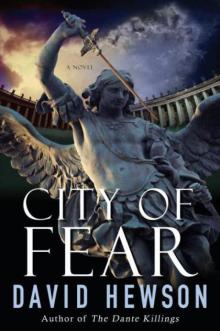 City of Fear nc-8
City of Fear nc-8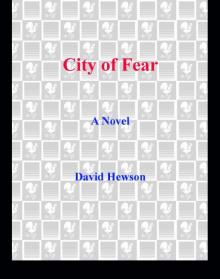 The Blue Demon
The Blue Demon The Garden of Evil
The Garden of Evil The Lizard's Bite
The Lizard's Bite The Wrong Girl
The Wrong Girl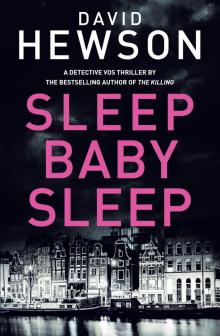 Sleep Baby Sleep
Sleep Baby Sleep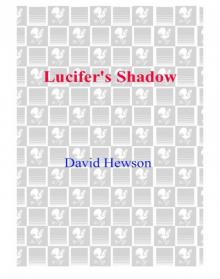 Lucifer's Shadow
Lucifer's Shadow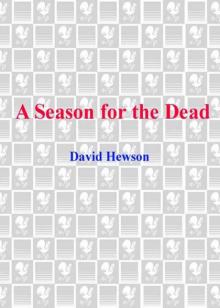 Season for the Dead
Season for the Dead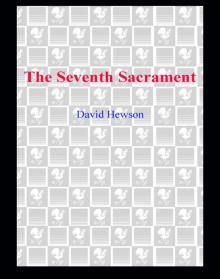 The Seventh Sacrament
The Seventh Sacrament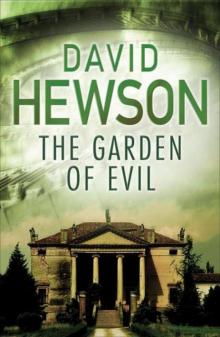 The Garden of Evil nc-6
The Garden of Evil nc-6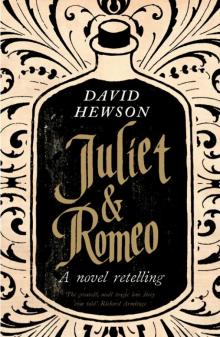 Juliet & Romeo
Juliet & Romeo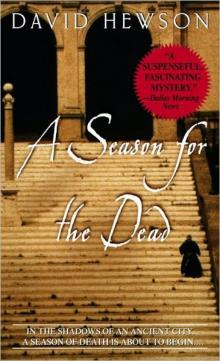 A Season for the Dead nc-1
A Season for the Dead nc-1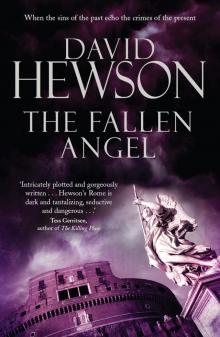 The Fallen Angel nc-9
The Fallen Angel nc-9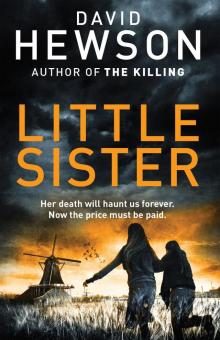 Little Sister
Little Sister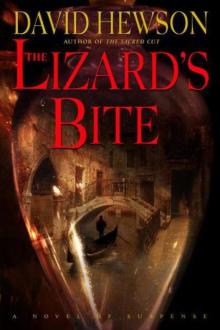 The Lizard's Bite nc-4
The Lizard's Bite nc-4 The Killing 2
The Killing 2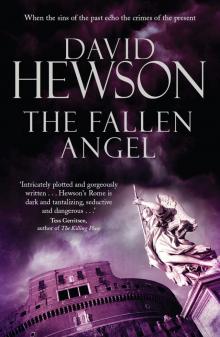 The Fallen Angel
The Fallen Angel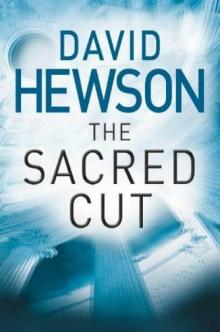 The Sacred Cut
The Sacred Cut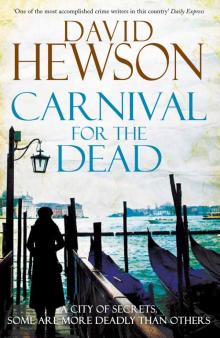 Carnival for the Dead
Carnival for the Dead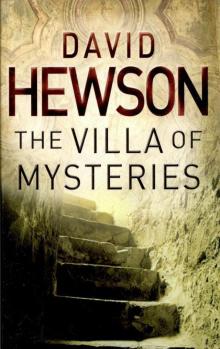 The Villa of Mysteries nc-2
The Villa of Mysteries nc-2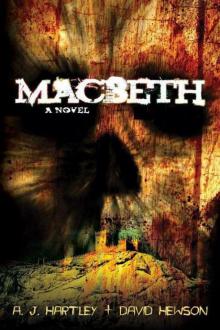 Macbeth
Macbeth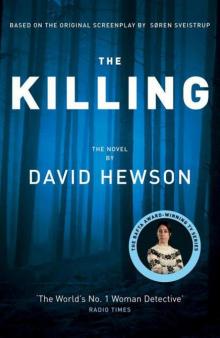 The Killing - 01 - The Killing
The Killing - 01 - The Killing The Villa of Mysteries
The Villa of Mysteries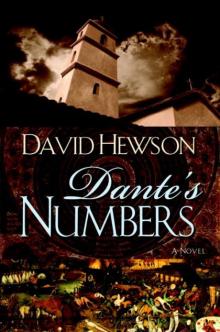 Dante's Numbers nc-7
Dante's Numbers nc-7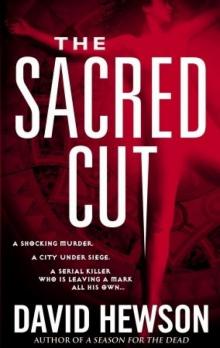 The Sacred Cut nc-3
The Sacred Cut nc-3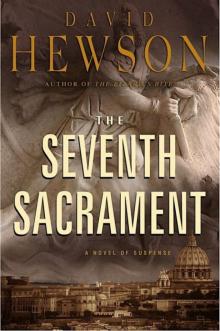 The Seventh Sacrament nc-5
The Seventh Sacrament nc-5